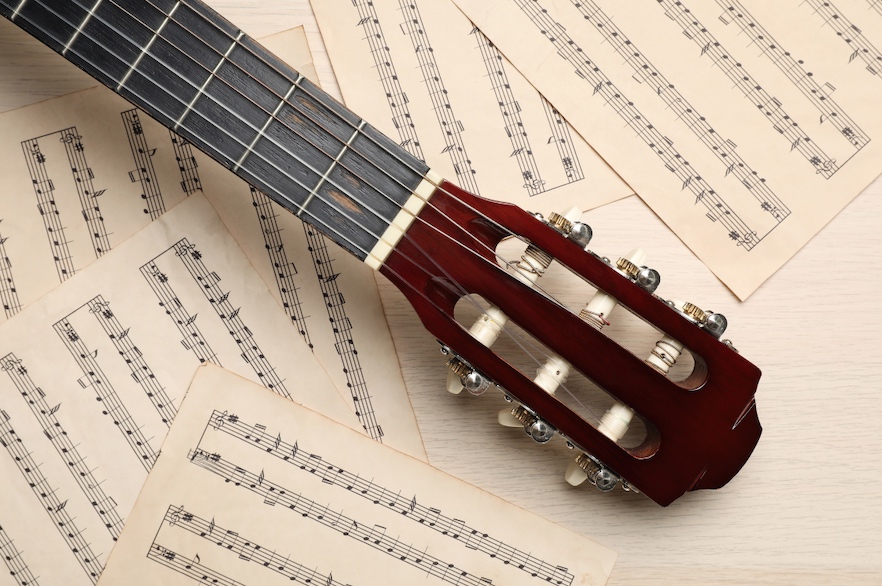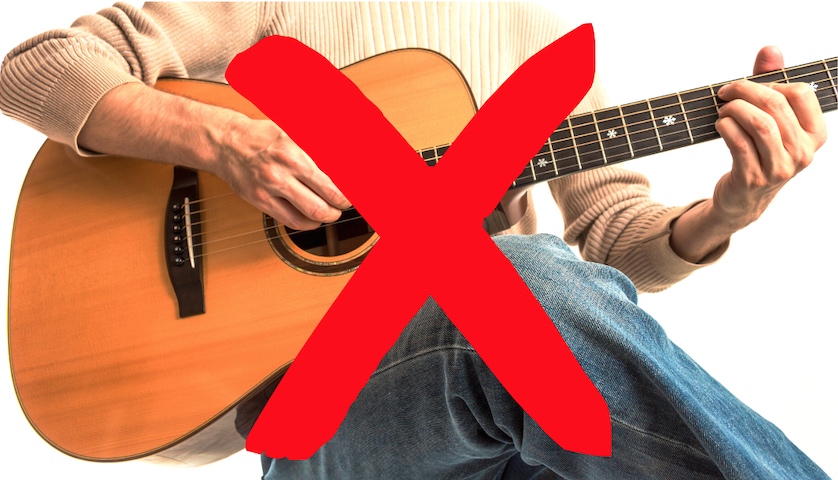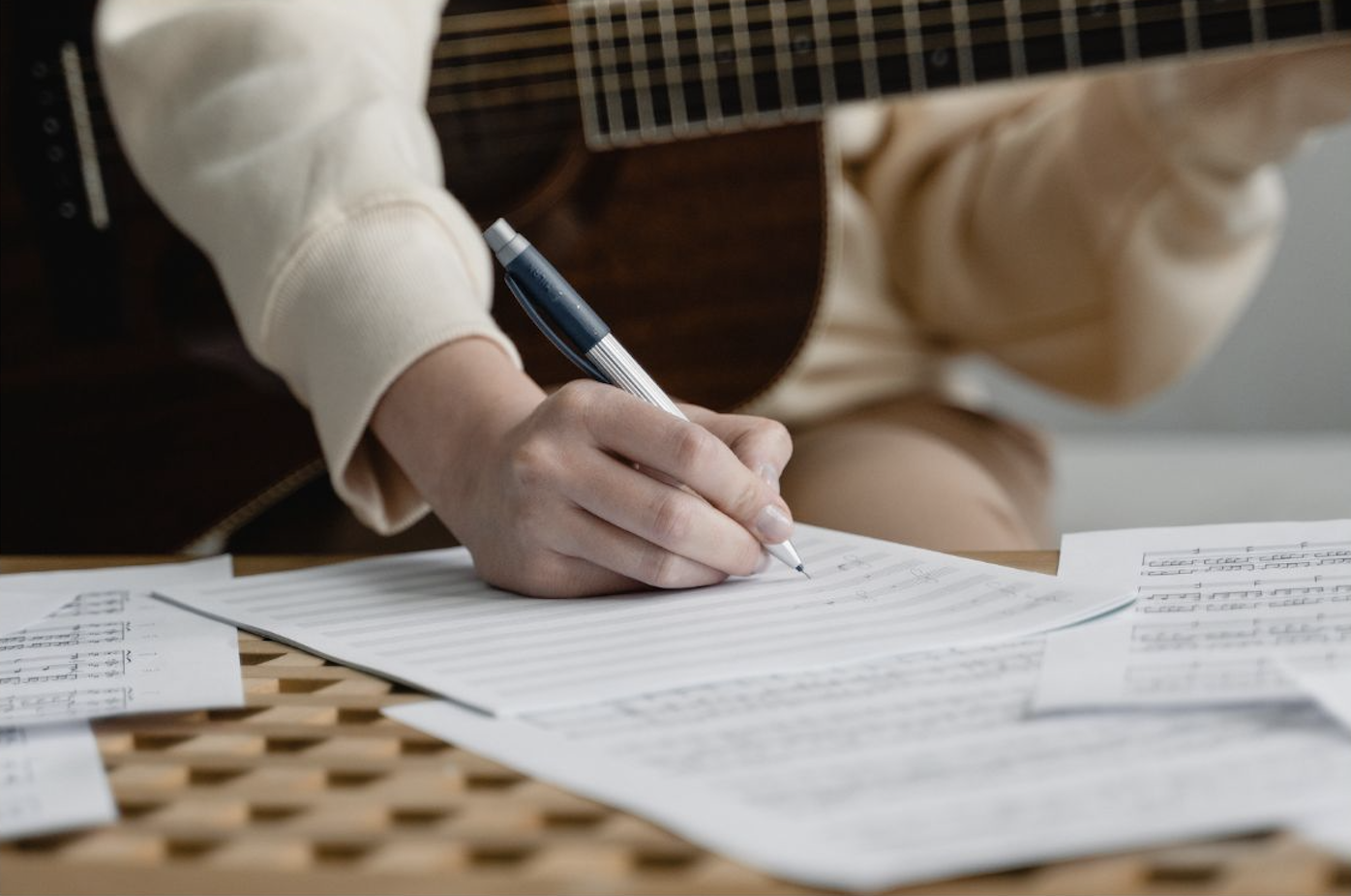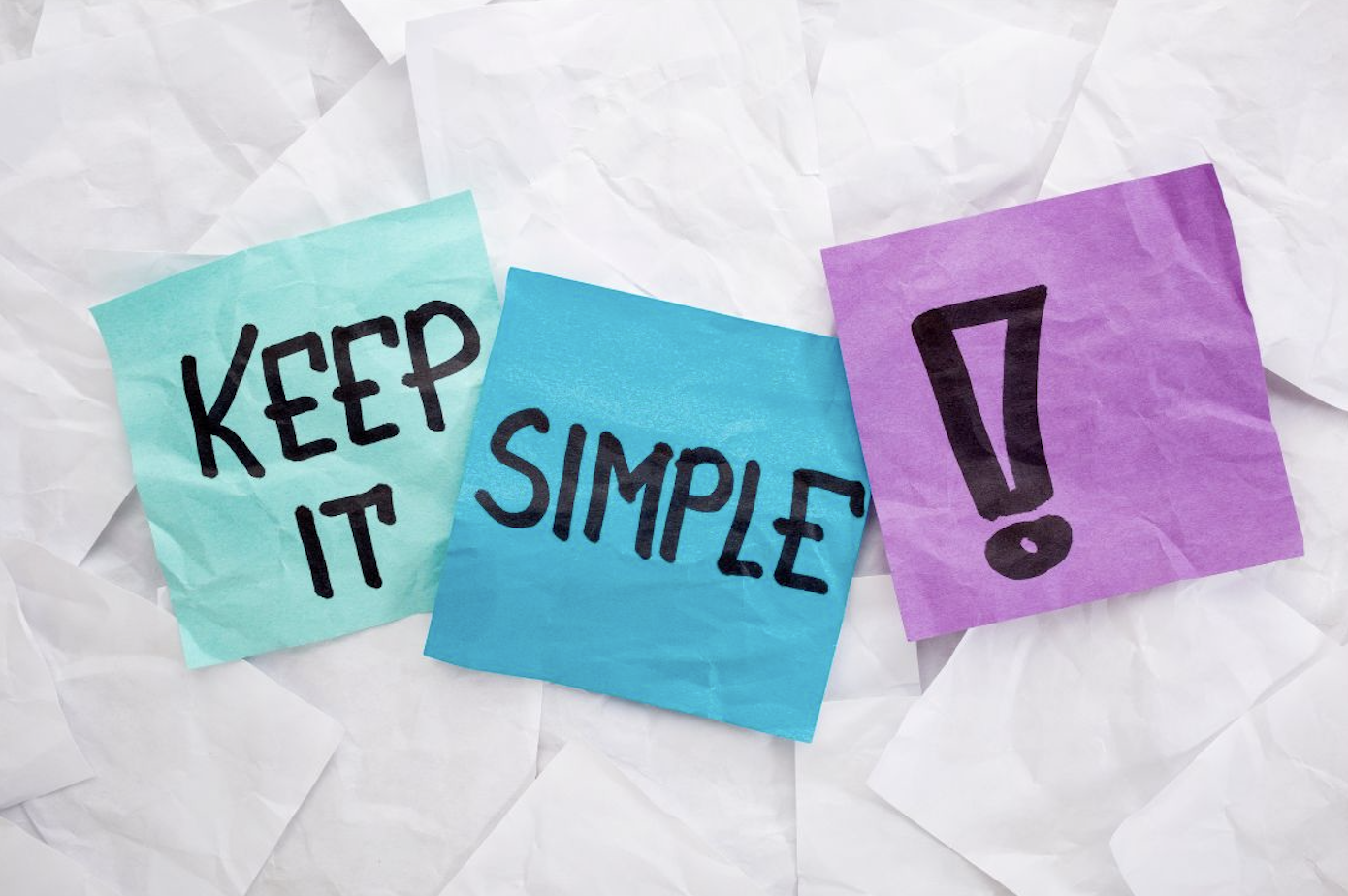Fix Your Rhythm And Timing On The Guitar With Just 5 Minutes A Day!
By Simon Candy
 Do you ever find yourself struggling to play a song or riff on your guitar, even though you have the notes down?
Do you ever find yourself struggling to play a song or riff on your guitar, even though you have the notes down?
You might try playing it faster, but it still doesn't sound right.
This can be a frustrating experience for many guitar players, including myself when I first started learning.
What I eventually realized was that my rhythm and timing on the guitar needed work.
Although I was playing all the right notes, I wasn't placing them in the correct spots, which is why the song or riff didn't sound right. Essentially, I lacked the ability to play my guitar in time.
Understanding how to play your guitar in time is essential for your musical growth. Although it may not seem like the most exciting topic, focusing on rhythm and timing can greatly enhance your guitar skills and lead to significant improvement.
In this article, you learn how to dramatically improve your timing and rhythm on the guitar, and it won’t take any more than 5 minutes of your day.
Why You Struggle To Play Your Guitar In Time
You can think of timing as the glue that holds everything that you play on your guitar together. It will make or break your playing and many people struggle with it, sometimes not even aware that it is a problem.
The reason why playing your guitar in time can be a struggle is because far too often your focus tends to be on what notes to play, and not WHEN to play these notes.
The Rhythm and timing of a song tend to be something that you think will happen by default once you have the notes and chords down. This is not true, and as a result, it is the cause of many guitar playing problems and frustrations.
The Rewards Of Having Great Rhythm And Timing
The exercises that are presented in this article are simple yet very effective if done regularly.
As a result, you will notice a significant improvement in your sense and awareness of time. You will start to "feel" time rather than having to "think" about it.
The ultimate goal is to transition from having to "think" about where the beat is and where the notes on the guitar are played, to "feeling" them.
Once achieved, playing the guitar will become much more enjoyable. No longer will playing in time be a challenge. You will be able to play your favourite songs with greater ease and learn them much faster.
Put Your Guitar Down. You Won’t Be Needing It
 Instead of focusing on a specific task, let's concentrate on improving your rhythm and timing in a broader sense. This will allow you to effortlessly play riffs, licks, chords, or any song you desire.
Instead of focusing on a specific task, let's concentrate on improving your rhythm and timing in a broader sense. This will allow you to effortlessly play riffs, licks, chords, or any song you desire.
The objective is to enhance your overall perception and awareness of time.
Surprisingly, you can practice playing in time without a guitar. It's preferable to do so without having a guitar in your hands since it eliminates distractions. We should approach it like a drummer, concentrating only on rhythm, not pitch.
Another advantage of practising rhythm and timing away from the guitar is that you can do it anywhere, anytime. Even if you have a brief 2-minute break, you can utilize it to improve your timing and, as a result, your overall guitar playing.
Warning:The following drills may seem very simple, and you may think that you are above this and don’t need to do them. This is a common and very costly assumption that people make time and time again. No pun intended :) Don’t be one of them. Whether you are new to guitar, or you have been playing for a while, the following exercises will help your rhythm and timing and by extension, your guitar playing in a great way.
Seeing that 4/4 is the most common time, I am going to use it in the exercises below, but know that you can use other time signatures if you wish. Also, I highly recommend using a metronome when working on your timing. You will still benefit doing the following exercises without one, however using a metronome will dramatically improve your timing by making sure that you keep a consistent tempo and don’t speed up or slow down.
If you have not used a metronome before, or even if you have, check out this video where I take you through 5 tips and tricks for practising guitar with a metronome: (you can check it out after doing the exercises in this article)
Let’s Begin . . .
So to start simply count 1, 2, 3, 4, 1, 2, 3, 4 etc
If you are using a metronome it would be one count to each click.
Once you have a steady count going, start to tap on the “1” beat only. So it would be one tap to every 4 beats (clicks). Here is the count with the beat you are tapping highlighted:
1, 2, 3, 4, 1, 2, 3, 4 etc
Next, tap once to every two beats like this:
1, 2, 3, 4, 1, 2, 3, 4 etc
Then one tap to every beat like this:
1, 2, 3, 4, 1, 2, 3, 4 etc
Make sure you are counting each beat aloud when doing this. This is vitally important in developing great timing and rhythm.
If you count aloud now, you won’t need to down the track. It is a means to an end as you will start to “feel” the beat instead.
Time To Divide The Beat
Next, lets divide the beat you are counting into some common divisions that you will come across in your everyday guitar playing.
You can divide the beat into two by tapping twice to each click of the metronome and counting:
1 + 2 + 3 + 4 + etc
or you can tap three times to each click of the metronome and count:
1 + a 2 + a 3 + a 4 + a etc
and finally, four times to each click of the metronome and count:
1 e + a 2 e + a 3 e + a 4 e + a etc
These are the basic divisions of the beat in music. Counting and tapping them out, especially to a metronome, will provide you with a very solid foundation for your rhythm and timing skills.
Mixing Up Your Divisions For Better Rhythm And Timing
Once you have a good hold on each division of the beat in the above exercises, you can then start to create some variety in your rhythms by mixing them up. Realistically this is how it will be. Most rhythms that you come across in your music will be combinations of different divisions of the beat.
So for example you could count and tap the following:
1 + 2 e + a 3 + a 4 + etc
or how about this one:
1 e + a 2 + 3 e + a 4 + etc
Get the idea?
There are many possible combinations, and to develop a great sense and awareness of rhythm and timing you should create your own and count and tap them everyday.
In fact, you only need to dedicate 5 minutes a day to doing this and you will see great results! Remember too that you can do it anywhere, anytime because you do not need your guitar.
Another thing worth mentioning here is the ability to tap your foot on the beat as you do the exercises above and when you are playing guitar in general.
Tapping your foot allows you to keep time when playing.
Watch the video below to learn how to tap your foot on the beat while playing guitar.
You will be taken through 3 levels that increase in difficulty to get to the point where you can have your foot automatically tapping on the beat while playing anything on guitar:
Learn how to fully maximize your new found rhythm and timing skills by turning your acoustic guitar into a drum using these essential Percussive Guitar Techniques
What To Do When You Are Stuck In A Rut With Your Rhythm Guitar Playing
By Simon Candy
 Have you ever been, or are you right now, in a situation where you have become stale with your guitar playing?
Have you ever been, or are you right now, in a situation where you have become stale with your guitar playing?
Every time you pick the guitar up to play, you find yourself using the same old chords and strumming patterns. You may even pick out some notes in the chords, but the sound is getting stale and boring all the same.
This is a common frustration that can lead to one quitting guitar playing altogether.
However, with the right approach, anyone can learn to sound good on guitar, even surprising themselves when picking the instrument up to play.
In this article, I am going to focus on rhythm guitar playing and how you can literally develop endless ways to approach it, giving your playing loads of variety.
No longer will your guitar playing feel or sound dull, predictable, and boring
How To Master Your Rhythm Guitar Skills: Strumming
Let's begin with strumming.
Strumming is an everyday skill you need to know, and while learning patterns seems like the logical thing to do, there is much more to it than that.
Learning strumming patterns is important, but is only 1 step of the process, not the whole process in and of itself.
In addition to learning patterns for strumming on guitar, you also need to learn how to apply them in a dynamic fashion so they sound musical, as well as the ability to ad-lib your strumming and not be restricted by patterns.
Watch the video below, to learn how to sound better strumming through various dynamic approaches:
How To Master Your Rhythm Guitar Skills: Picking
An alternative to strumming is to pick notes out of the chords you play.
Let me give you an example of how to train this rhythm guitar concept into your playing so you can use it wherever you like with freedom.
Here is a typical chord progression you are likely to come across:

and here is one of many ways you could play this progression using a chordal picking approach:

Now most people will stop at this, and as a result every time they use a chordal picking approach in their guitar playing, this is how they will do it, and this is how it will sound.
You don’t want that, because pretty soon you are going feel like you are in a rut with your playing every time you go to chordal pick something on your guitar because you will do it in the same way.
Let me give you another way you could pick this same chord progression:

Now you have two ways that you can pick through these chords. This will start to develop some variety in your playing so you sound much better.
To train this even more into your playing, so that it becomes something you can do effortlessly whenever you want, you need to combine the previous two approaches into one like this:

Combining these two approaches trains even more variety into your chordal picking skills. You are learning more possible combinations in regard to patterns to pick and will sound much better on guitar when using this kind of rhythm approach in your playing.
Finally, let's apply this technique to another unrelated chord progression like this:

Application is a vitally important part of training and mastering any guitar skill. Taking the rhythm concepts you come across in the songs you play and applying them to other musical situations is crucial in developing great guitar rhythm playing skills.
How To Master Your Rhythm Guitar Skills: Strumming And Picking Together
Combining strumming with picking is something you do a lot of the time when playing rhythm guitar.
Sometimes it’s more strumming with some picking, other times it’s more picking with a little strumming.
There are many possible combinations.
Check out this video where you learn 5 steps to strum and pick your guitar with ease:
To learn many more essential rhythm guitar concepts so that you can develop endless ways to play and never get stuck in a rut again, check out this free mini course for developing your rhythm guitar chops
How To Learn Songs On Guitar From Start To Finish
By Simon Candy
 Do you have the music of a song you want to learn on guitar, as well as the technical skills to play it, but you are experiencing difficulty trying to play the song proficiently from beginning to end?
Do you have the music of a song you want to learn on guitar, as well as the technical skills to play it, but you are experiencing difficulty trying to play the song proficiently from beginning to end?
In this article, I share some effective methods for learning songs on the guitar. It's a common challenge that can be frustrating for guitar players of all levels. Merely having the tablature and recording of a song is not a guarantee that you will be able to play it from start to finish.
I can certainly relate. There were many times in my early years of playing that I would become very frustrated when learning songs on guitar. I had absolutely no clue how to go about it. On the surface it seemed pretty simple, you start at the beginning of the song and work your way through to the end.
But there is much more to it than that.
You need proven methods that work in getting a song down so that you can play it all the way through, from start to finish and that is what we are going to explore in this article.
How To Learn Those Hard Parts To Any Song
 Trying to tackle a song you are learning in one big piece is crazy. Playing the song as a whole is the end result, not a starting point. There is a lot of muscle memory that generally needs developing to be able to play songs, not to mention the different skill sets required from you, the player, to be able to play them all the way through.
Trying to tackle a song you are learning in one big piece is crazy. Playing the song as a whole is the end result, not a starting point. There is a lot of muscle memory that generally needs developing to be able to play songs, not to mention the different skill sets required from you, the player, to be able to play them all the way through.
So to combat this, we need to break the song down into smaller sections. One of the best ways to do this when learning the song, is to divide it into it’s natural sections such as Intro, Verse, Chorus, Bridge etc. You would then go about working on these areas in isolation.
But here is the really important part. Don’t get bogged down in any one area of the song. You must rotate through each section you are working on regularly.
Why?
There are two main reasons:
1. It's quite common to get bored with a song you're trying to learn, and this often results in giving up on it and moving on to something else. One way to keep things fresh and avoid this from happening is by rotating through different sections of the song that are likely to be distinct from one another.
2. By rotating through various sections of a song, you can enhance your guitar playing skills in the most effective way possible. This means not only switching between different parts of the song but also mastering different techniques like chord changes, strumming, picking, solo and riff playing, among others. This approach of regularly switching between different areas of guitar playing is a highly efficient practice strategy that allows you to learn a song while also improving your skills.
Simplify The Song So You Can Play Through From Start To Finish RIGHT NOW!
 While the above is very important to do when learning a song, it is equally important to also be playing along to the whole song.
While the above is very important to do when learning a song, it is equally important to also be playing along to the whole song.
But how do you do that?
Isn’t that why we are breaking the song down in the first place, because we can’t play it all the way through yet?
To be able to play the entire piece, it is best to simplify it as much as necessary. This may entail omitting the challenging parts and simply playing the chords.
If you encounter some difficulty even with that, you can skip the strumming to give yourself more time to transition between chords and complete the song from beginning to end.
What's the point of doing this?
Well, breaking down a song into smaller parts allows you to work on specific skills as a musician and guitarist that you wouldn't necessarily focus on otherwise.
Think about it. At no point when you break the song down, sometimes into very small parts, are you working on keeping time, or on the feel of the song in regard to the varying dynamics from one section to the next, or learning the actual format of the song (ie. what things happen in what order).
However, when you simplify the song your are learning, so that you can play it all the way through, you ARE working on all these skills. Not only that, but you also get to hear the more detailed parts, that you are working on when breaking the song down, in actual context. This will make it a lot easier for you to put them back into the song when these parts are ready.
Why Do All Of This?
 You may be thinking, isn’t it just easier to learn the song from start to finish?
You may be thinking, isn’t it just easier to learn the song from start to finish?
Certainly, there may be a few songs that you can easily play with just three chords and some basic strumming. However, for most songs that you wish to learn, it is essential to break them down and practice each part separately, as demonstrated above.
By consistently practicing and learning songs on the guitar in this way, you will gradually build a repertoire of music that you can confidently play from start to finish. Your playing skills will improve significantly, and you'll gain more confidence in your abilities.
Over time, the process of learning new songs will become faster and more efficient, as you won't need to simplify them as much as you did in the beginning. Eventually, you'll be able to impress your friends by playing entire songs without any difficulty.
With practice, you'll become skilled enough to play in bands or jam with friends. Most importantly, you'll develop a strong belief in yourself and your abilities to play guitar.
Check out the video below to discover my three-step approach to mastering any song on the guitar:
To get a full and complete method of how to go about learning songs on guitar so that you can play them all the way through from start to finish, check out this free ebook and audio on how to learn songs on guitar.